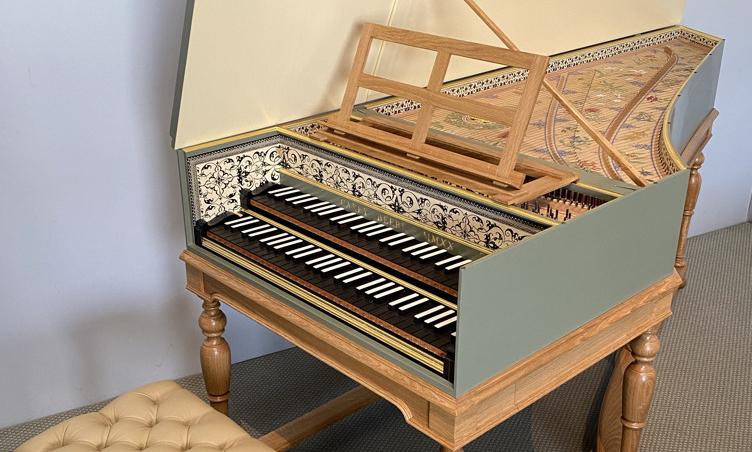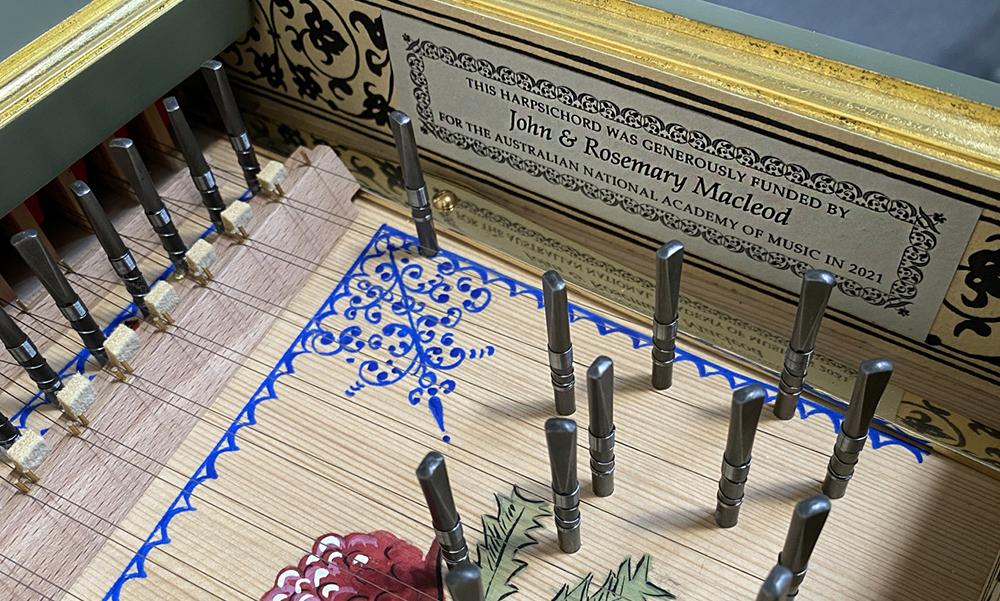The Australian National Academy of Music, through the support of John and Rosemary Macleod, has recently acquired a new harpsichord built to ANAM's specifications, by one of the world's great instrument makers, Sydney-based Carey Beebe.
We caught up with Carey to learn more about this new instrument and its tremendous value to the musicians studying keyboard.
Can you tell us a little bit about yourself and your career as a Harpsichord maker?
I learnt piano from an early age, and always loved playing Bach. When I entered BMus at Sydney Con, I discovered that of the thirty-odd students in first year, thirteen were piano majors! That was too many for future comfort, so at the end of first semester, I changed over to harpsichord. I needed an instrument to practice on, so I built one from a kit with the help of my father. I had no specific intention of becoming a harpsichord maker, but I built another. And another. After I finished my degree, I went to the United States to learn more about building. For a few years, I had a career as both a player and maker, before deciding to concentrate on making.
 HARPSICHORD MAKER CAREY BEEBE. PHOTO BY KEVIN FRYER
HARPSICHORD MAKER CAREY BEEBE. PHOTO BY KEVIN FRYER
ANAM has commissioned you to do a replica of a harpsichord originally made in the 17th century by the Dutch family firm Ruckers. Can you talk a little bit about the Ruckers family, their practice as harpsichord makers and their influence in the development and evolution of the harpsichord?
Antwerp was a centre of harpsichord making, and from there, the Ruckers dynasty exported instruments around the world. The earliest surviving Ruckers, a 1581 Hans Ruckers Mother and Child double virginals now in the New York Metropolitan Museum of Art, was discovered in Cuzco Peru in the early twentieth-century! The Ruckers instruments were so highly prized, that they were later updated and enlarged by the French makers in a process known as ravalement. I wouldn’t call it a “replica”, because it’s not a copy of one particular instrument, but the ANAM harpsichord is recognizably made in that early C18th French form, a hundred years after it would have left the Ruckers workshop.
What do you think makes the harpsichord unique from other keyboard instruments?
There is no one harpsichord. We are talking about several centuries of Western music. Each region had its own tradition and musical as well as aesthetic needs to satisfy, using mostly local materials.
Unlike most other musical instruments, the harpsichord lacks a continual tradition. Supplanted by the upstart pianoforte by the early C19th, it was only rediscovered in fits and starts later that century. Those complicated revival harpsichords were built in piano factories, and with the natural arrogance of modern man wanting to improve what they saw as deficiencies in the originals, the resulting “plucking pianos” bore little resemblance to the instruments they were trying to emulate. It wasn’t until well into the 1960s that musicians became more interested in harpsichords which better approximated the originals with richer tone and more conducive touch. Many musicians today aren’t aware of those two divergent streams of harpsichord development last century.

ANAM's new Harpsichord, built by Carey Beebe
Can you share with us the characteristics of harpsichords created during the 17th or 18th centuries and how do you think those characteristics resonate with classical music performance today?
The best instruments have a clarity and precision of tone that can be moulded at the will of the player. I believe that attentive audiences can pick that up, and feel part of something when they are in the presence of a harpsichordist that is one with their instrument. Please don’t try to tell me the harpsichord can’t play expressively!
What was your process of re-creating this instrument? How long did it take you to make, and where did you source the materials for it?
I was working on the ANAM harpsichord for about a year, although I normally have several projects on the go at once. I don’t feel obliged to do everything myself, but rely on the expertise of others. Building a traditional instrument like a harpsichord requires traditional, hence largely European, materials. There’s no plywood, MDF, or plastic. If you like, this is an organic harpsichord: The strings are plucked by Canada goose quill, set into holly tongues sprung by boar bristle.
What do you think is the most valuable thing that ANAM musicians will get from playing this kind of instrument?
For a sensitive musician, a great harpsichord is the best teacher.
Erin Helyard makes his long-awaited return to ANAM to debut this spectacular instrument in Erin Helyard: Splendours of Dresden on 11 June 2022 at the Rosina Auditorium, Abbotsford Convent. Click here to get your tickets.
Harpsichord generously funded for ANAM by John and Rosemary Macleod.
